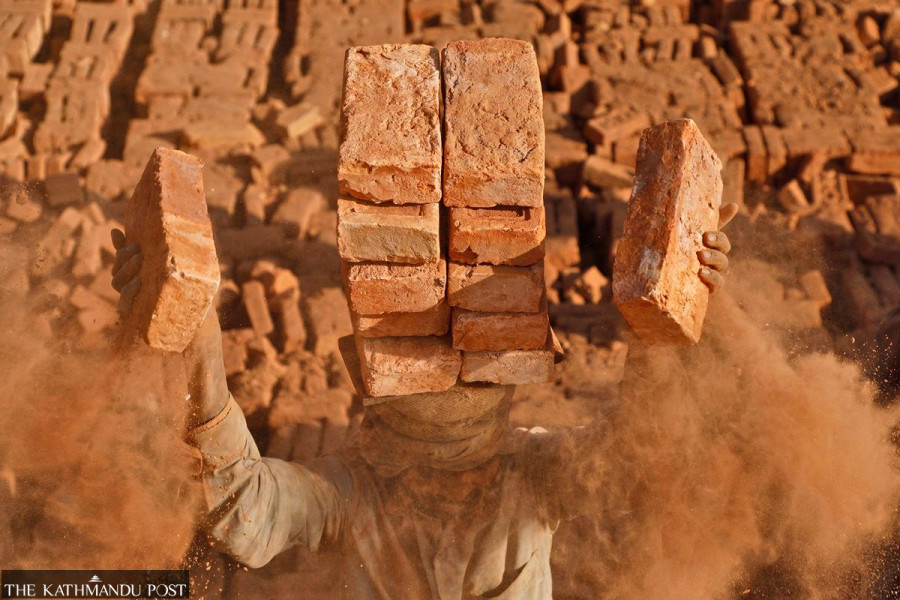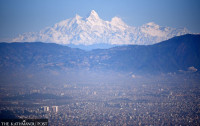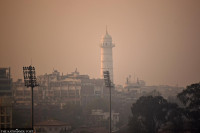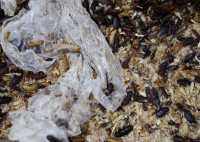Climate & Environment
Dirtier coal for brick kilns could worsen winter air
Environmentalists suggest use of briquette as kiln fuel and production of hollow bricks as possible way outs.
Arjun Poudel
Hira Bricks Industry, Lalitpur has been planning to delay firing the kiln until mid-January, two months later than usual. The delay is due to the rocketing international coal prices caused, first, by the Covid pandemic and then by the Russia-Ukraine war, which started last February.
“In two years, coal prices have increased three-fold,” Bishnu Maharjan, the factory proprietor, told the Post. “Prices have doubled in the past year. This year no coal dealer has approached us to learn of our requirements.”
Coal is the primary fuel used by the Nepali brick industry and the black stuff is imported from India. Due to supply chain disruptions caused by the pandemic and the war, coal prices have increased significantly, entrepreneurs say. And what concerns environmentalists in Nepal is the likelihood of brick kilns using lower-grade coal, which contributes to deterioration in air quality.
“It is obvious that when businesspeople don’t find raw material, they seek options and may use low-grade coal,” Bhusan Tuladhar, an environmentalist. “Low grade coal contains high levels of sulphur which, when burned, can be hazardous to human health.”
Emissions from brick kilns along with vehicles are said to be major contributors to air pollution in the country, which reached unhealthy levels for sensitive groups on Wednesday, according to IQAir, the Swiss air quality technology company.
IQAir collects real-time air-quality data from around the world.
Brick factories in the Kathmandu Valley are the third largest source of suspended particulate matter (SPM) and PM10 emissions. PM10 refers to particulate matter or solid and liquid droplets in the air that are less than 10 micrometres in diameter.
Brick kilns in the Kathmandu Valley are estimated to consume over 56,100 tons of coal and 330 tonnes of other local fuels including saw dust, wood, every year, according to a study carried out by the Department of Environment.
Brick kiln operators admitted that they may resort to using low quality coal if they don’t have other options.
“If we are unable to get high quality coal either due to unavailability or due to price hike, we will have to use whatever we can afford,” said Umesh Shrestha, proprietor of Daiju Brick Industry at Banchare Danda. “To avoid huge losses we may have to use low grade coal too.”
Nepali brick industry emits about 1.25 million tons of carbon dioxide annually, according to a study.
“The brick industry was already hit by the Covid pandemic, which slowed down construction activities, and the Ukraine war has directly affected the supply of coal,” said Bikram Shah, proprietor of Sagar Brick Industry in Sarlahi district.
Experts say a number of airborne toxins and pollutants—mercury, sulphur dioxide, nitrogen oxides, particulates and various other heavy metals—generated from the burning of coal contribute to acid rain, respiratory illness, smog, and lung disease. And use of high-sulphur coal means emission of more sulphur dioxide.
“This is high time to find alternatives to minimise the use of coal in the brick industry,” said Tuladhar, the environmentalist. “There are multiple ways to go about it.”
Use of briquette (which can be made within the country from forest residue) instead of coal, use of hollow bricks instead of solid bricks, and mixing coal dust in brick-making are among the measures that could cut the use of coal in the kilns, according to experts.
“Briquette doesn’t contain sulphur dioxide, and use of hollow bricks means use of less clay, which in turn means less coal is required to make bricks,” said Suyesh Prajapati, managing director at MinErgy Pvt Ltd. “Emissions can be drastically cut by mixing fuel in the clay.”
Brick industry is one of the largest coal consuming sectors in Nepal, whose annual consumption is estimated at 504,000 tonnes of coal and hundreds of tons of biomass. There are 1,349 brick factories in Nepal, churning out 5.14 billion bricks a year.
Experts say authorities must take account of the current coal shortage and encourage brick factories to opt for cleaner options.
“Authorities can make emission monitoring mechanisms effective, and encourage factories to use briquettes instead of coal,” said Bhupendra Das, air quality expert at Clean Air Asia. “They can also help kilns with the use of modern technology.”




 16.12°C Kathmandu
16.12°C Kathmandu








%20(1).jpg&w=300&height=200)

